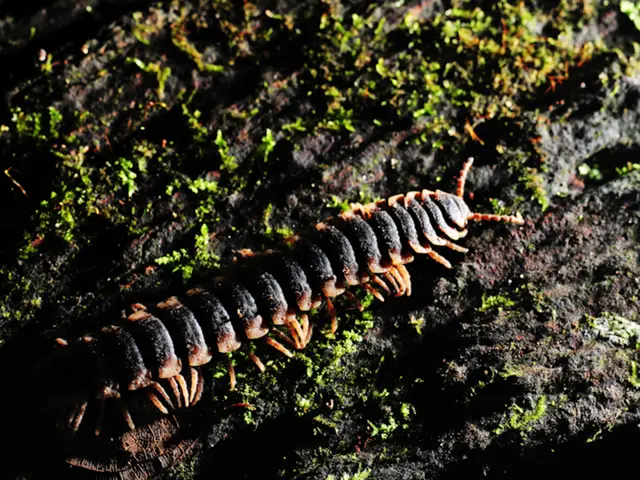Rapid and Severe Rosacea: Triggers, Signs, and Remedies
Hey there! Let's dive into rosacea fulminans, a severe, sudden-onset inflammatory skin condition that primarily strikes the central face.
Also known as pyoderma faciale, rosacea fulminans typically shows up as inflamed, painful nodules and pimples that join together, forming a stark contrast to common rosacea or acne symptoms, appearing more severe and surfacing rapidly. This condition primarily targets females of childbearing age, although its specific cause remains unknown.
Now, let's shed some light on potential triggers and correlating conditions. According to a 2020 review, there may be a connection between rosacea fulminans and inflammatory bowel disease as well as pregnancy. It seems that people who suffered from some kind of rosacea previously might be more prone to rosacea fulminans. Potential triggers also include emotional stress, hormonal fluctuations, and certain medications.
By the way, have you heard about how certain dietary choices could trigger or worsen rosacea symptoms? Here's a quick list of foods to keep an eye on: spicy foods, alcohol, foods containing cinnamaldehyde like chocolate, tomatoes, or citrus fruits, and histamine-rich foods such as wine, aged cheese, or processed meats. Keep in mind that these dietary triggers might vary from person to person, so it's essential to consult with a healthcare professional for personalized recommendations to manage your rosacea effectively.
Symptoms of rosacea fulminans primarily affect the forehead, nose, cheeks, and chin. You may encounter sudden localized skin color changes, like redness, inflammation, and painful nodules or pimples. Some people might also experience related ocular symptoms, such as burning, itching, or light sensitivity in their eyes.
When it comes to treatment options, doctors may prescribe oral isotretinoin, corticosteroids, or a combination of both. In some cases, antibiotics combined with corticosteroids and lifestyle changes have shown promising results. lifestyle modifications such as reducing stress, making dietary changes, and using gentle skin care products on the face can also complement medical treatments, improving overall symptom management and quality of life for those living with this condition.
If you're experiencing any symptoms that go beyond typical rosacea or acne, such as large, tender nodules, abscesses, or significant facial discomfort, it's wise to consult a dermatologist or another healthcare professional as soon as possible. Early intervention can help manage symptoms effectively, reduce the risk of complications, and even improve your overall quality of life. Don't forget that personalized care and comprehensive management strategies tailored to your needs and circumstances are available when you seek help from healthcare professionals.
There you have it! A quick breakdown of rosacea fulminans, potential triggers, and treatment options. Stay informed, stay healthy! 🌱💪🏼
Dermatology, a branch of medical-conditions, plays an important role in the management of severe and chronic skin diseases like rosacea fulminans. This chronic disease, which primarily manifests as inflamed, painful nodules and pimples, is often associated with inflammatory bowel disease and pregnancy, according to recent studies. Skin care, particularly gentle products, is essential in managing this condition, as well as lifestyle modifications such as reducing stress and making dietary changes. Furthermore, healthcare professionals may prescribe various treatments, including oral isotretinoin, corticosteroids, or a combination of both, and antibiotics for some cases. It's crucial to seek help from a dermatologist or healthcare professional promptly if you experience symptoms beyond typical rosacea or acne.








